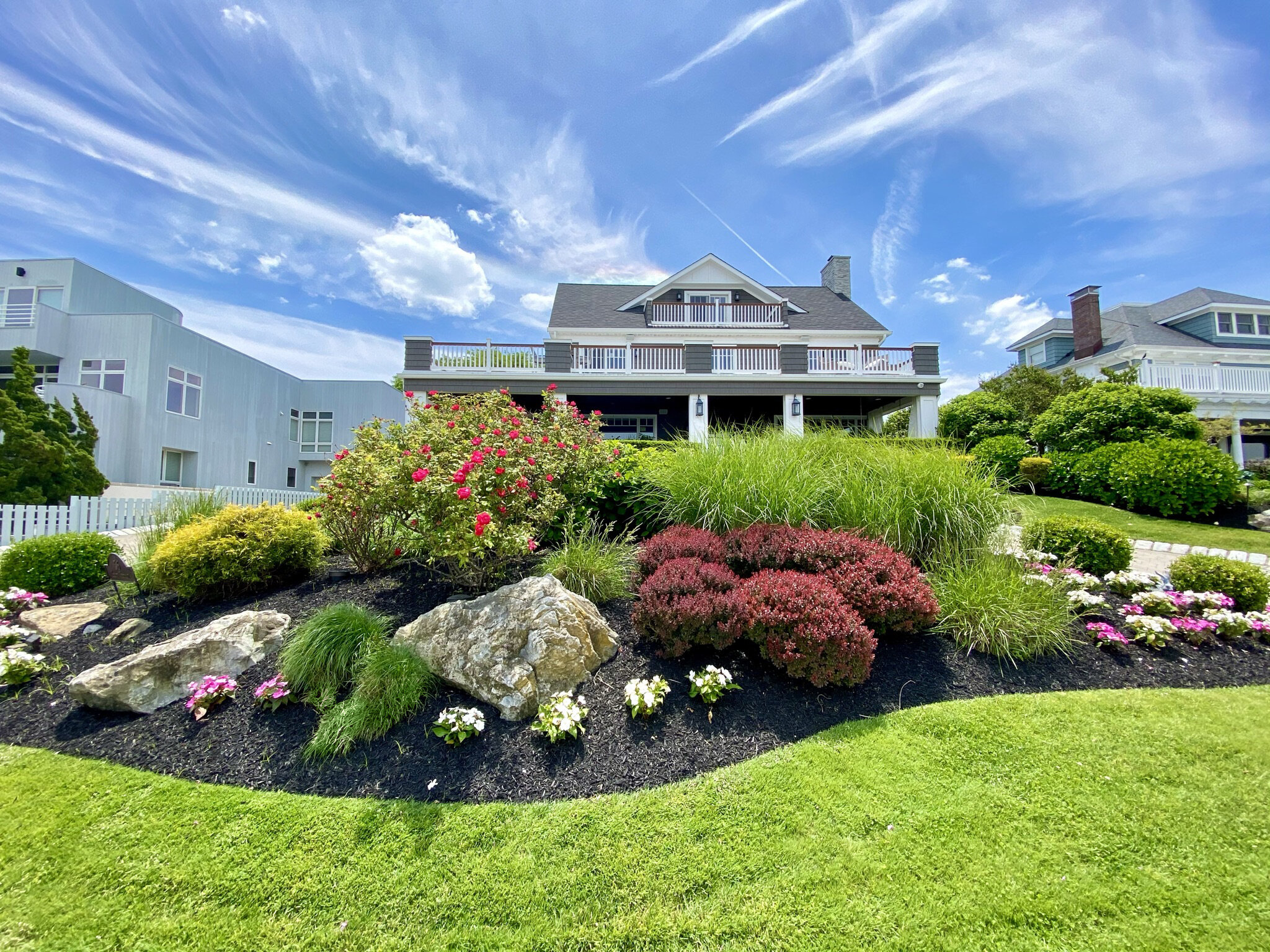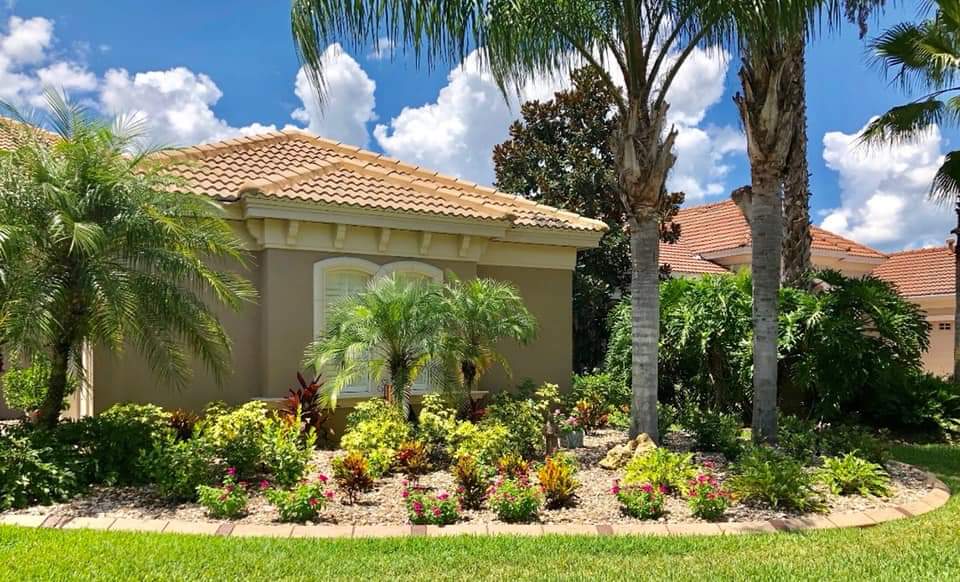Discover the Benefits of Sustainable Palm Desert Landscaping Techniques
A Comprehensive Overview to Designing and Implementing Effective Landscape Design Solutions
The art and science of landscaping expand past mere looks; they include a thoughtful assimilation of design principles, ecological stewardship, and functional implementation. What strategies can one use to guarantee these landscapes not just grow yet also prosper in consistency with their environments?

Understanding Landscape Layout Concepts
One could wonder what fundamental elements contribute to effective landscape style. At its core, effective landscape layout depends upon several essential concepts that guide the plan and selection of components within an area. These principles include unity, rhythm, proportion, and balance, each offering to develop an unified outside environment.
Unity refers to the natural partnership amongst different elements, guaranteeing that they work together visually and functionally. Equilibrium can be attained via balanced or asymmetrical arrangements, allowing the landscape to really feel stable and inviting. Percentage entails recognizing the range of components in relation to each other and the surrounding atmosphere, advertising aesthetic harmony and convenience.

Analyzing Your Outdoor Space
Before applying the principles of landscape style, a comprehensive assessment of your outside space is crucial. This first evaluation aids define the extent of your landscaping project and makes certain that your style lines up with the distinct features of your property. Begin by examining the measurements of your area, taking precise measurements to comprehend the readily available area for various elements such as paths, patios, and yards.
Following, observe the existing functions of your landscape, consisting of topography, soil quality, and drain patterns. These factors significantly influence plant option and positioning. In addition, analyze the sunshine direct exposure throughout different areas throughout the day, as this will affect the sorts of plants that thrive in your yard.
Think about the microclimates developed by frameworks, trees, and other obstacles, as they can influence temperature level and dampness degrees. Lastly, keep in mind of any type of existing plants or hardscape elements that you desire to get rid of or retain. This thorough assessment lays the foundation for a knowledgeable and efficient landscaping service, making sure that your design is not only cosmetically pleasing however likewise practical and sustainable for many years ahead.
Sustainable Landscaping Strategies
These methods not just promote eco-friendly balance yet additionally improve the useful and visual worth of a landscape. Implementing reliable irrigation systems, such as drip watering, minimizes water waste and ensures that plants get adequate wetness (Palm Desert Landscaping).

One more efficient strategy is the calculated positioning of trees and bushes to supply all-natural windbreaks and color, therefore reducing power prices (Palm Desert Landscaping). Rainfall yards can be integrated into the landscape style to take care of stormwater drainage efficiently, filtering system toxins prior to they get in waterways
Selecting the Right Plants
Selecting the right plants for your landscape is crucial to attaining both visual appeal and eco-friendly consistency. The procedure why not try these out begins with an understanding of your regional environment, soil problems, and the certain microenvironments within your landscape. Analyzing elements such as sunshine exposure, wetness degrees, and existing flora will certainly assist you choose plants that flourish in your special setting.
Take into consideration incorporating native plants, as they are well-adapted to neighborhood conditions, call for less maintenance, and assistance regional wild animals. Additionally, selecting a diverse array of species can improve biodiversity while decreasing the risk of condition and pest outbreaks. It is important to evaluate the growth practices, blooming durations, and seasonal colors of possible plants to produce a natural and vibrant landscape.
In addition, believe concerning the intended usage of the area; for instance, if the location will experience high foot website traffic, opt for durable ground covers. By thoughtfully choosing plants that line up with both your environmental requirements and visual goals, you can produce a lasting landscape that not only improves your home yet also adds favorably to the surrounding ecological community.

Implementation and Upkeep Approaches
When the appropriate plants have been selected for your landscape, the focus shifts to reliable application and recurring maintenance techniques. Successful installment begins with correct website preparation, which consists of soil testing to establish nutrient degrees and pH, adhered to by changing the dirt as needed. Meticulously arrange plants according to their growth routines and light demands, making sure adequate spacing to advertise healthy growth.
Irrigation is a critical aspect of implementation. Develop a watering schedule that takes into consideration the particular requirements of each plant species, changing for seasonal site changes. Utilizing drip watering systems can enhance water efficiency and lower overflow.
Upkeep strategies need to be executed to guarantee the long life and vitality of your landscape. Regular jobs consist of weeding, mulching, and trimming to control development and protect against illness. Fertilization ought to be carried out based upon dirt tests, providing the needed nutrients without over-fertilizing.
Keeping an eye on for conditions and insects is essential; early discovery can stop significant damage. Last but not least, seasonal adjustments to maintenance routines, such as preparing and winterizing perennials for springtime development, will certainly guarantee that your landscape continues to be visually enticing and healthy and balanced year-round.
Final Thought
In final thought, efficient landscaping options need a thorough understanding of style principles, careful assessment of dig this outside spaces, and the application of sustainable methods. The selection of proper plant species plays an important duty in boosting visual appeal and eco-friendly strength - Palm Desert Landscaping. Successful application and ongoing upkeep better ensure the long life and vitality of landscapes. By integrating these components, landscapes can be transformed into lovely, useful atmospheres that promote biodiversity and contribute positively to area health.
One might wonder what foundational components add to efficient landscape style. At its core, successful landscape style pivots on several essential concepts that guide the arrangement and selection of elements within a space.Choosing the right plants for your landscape is critical to attaining both visual appeal and environmental consistency. It is necessary to evaluate the growth habits, flowering durations, and seasonal shades of potential plants to develop a cohesive and dynamic landscape.
Once the best plants have actually been selected for your landscape, the emphasis changes to effective implementation and ongoing maintenance techniques.